Choosing the right one- Pillow 101
As Physiotherapists with a special interest in spinal conditions one of the most common issues we see is people with both acute and chronic neck pain who will place their necks in incorrect postures.
Having the wrong pillow is one of the more common postural mistakes and a poorly fitting pillow can affect the neck in the same way that being on an ipad or laptop for too long. Poor positions and poor postures are detrimental to the muscles, nerves, joints and ligaments in and around the neck.
This will not be news to anyone with long standing neck pain. In fact I bet that if you reading this you likely have room or cupboard full of pillows and you may have spent hundreds or thousands of dollars in search of the perfect pillow and a good night's sleep.
Well let us help you with this dilemma.
Why do I need a supportive pillow?
- We spend 6-12+ hrs in either a static or dynamic position that will affect spinal alignment.
- When we are sleep we are often subconscious to postural awareness.
- Poor sleep posture can sometimes be the reason a person has neck pain or headache.
A pillow that is too high or too low places your neck in a tilted position. This will compress or stretch sensitive nerves, muscles and joints in the neck.
A pillow that is too soft or hard will not allow you to get comfortable or provide the correct support and density which may lead to scalp sensitivity or just an inability to get comfortable.
Sound familiar.... at Physica we call this the Goldilocks pillow principle. Let us take you inside the anatomy of a neck and the science behind choosing the correct pillow.
The anatomy of choosing the correct pillow
Our necks are made up of 7 vertebrae that all have muscles attaching to these levels. The nerves of the shoulder and arm exit through the joints between these vertebrae.
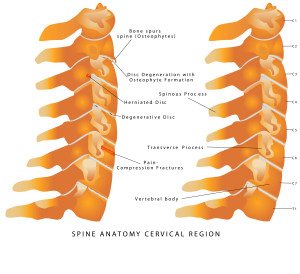
We also have very important blood vessels that travel in and around the neck region.
To see how important posture can be see the x rays of subjects below on different pillow heights. Note how the spinal alignment in side-lying and supine (on back) varies from pillow to pillow.
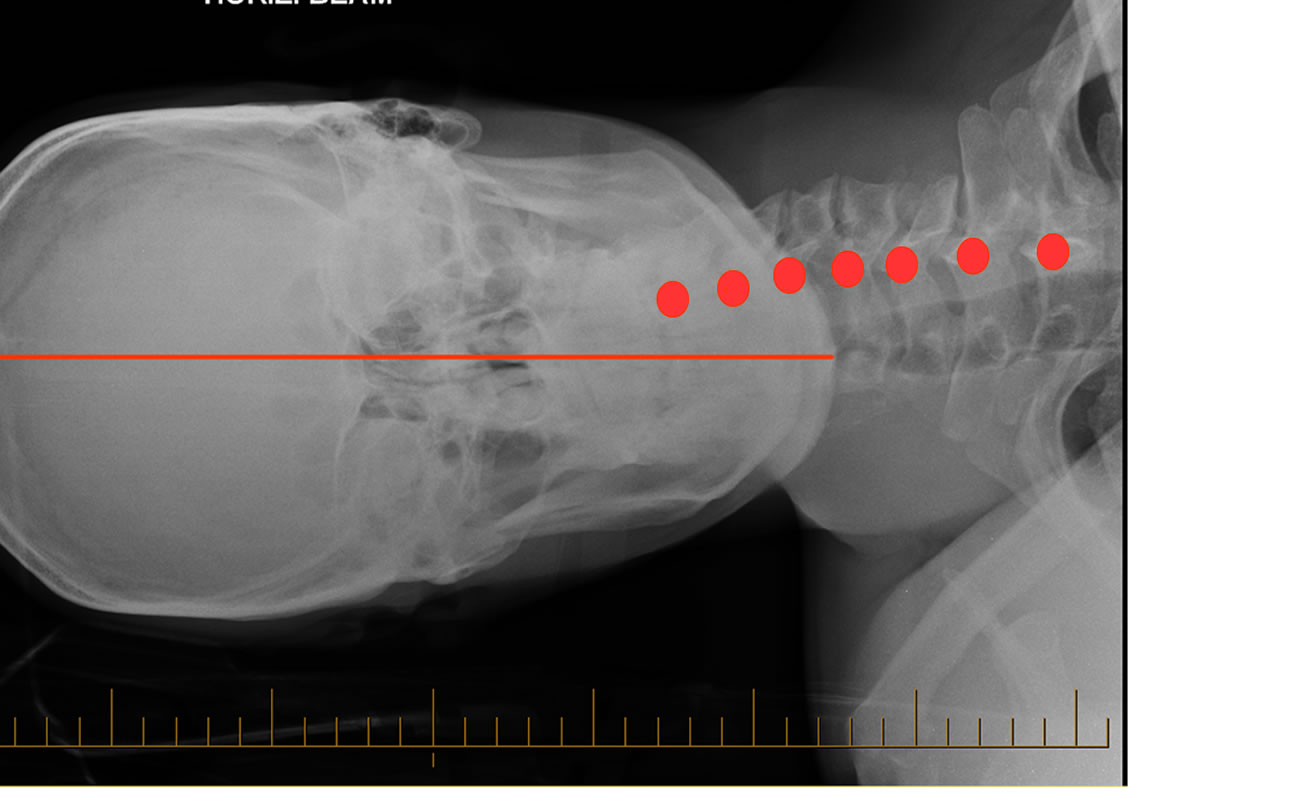
This pillow is too low. Similarly this will place load onto the shoulder, the joints on the downfacing side and also potentially impinge nerves that go down the arm.
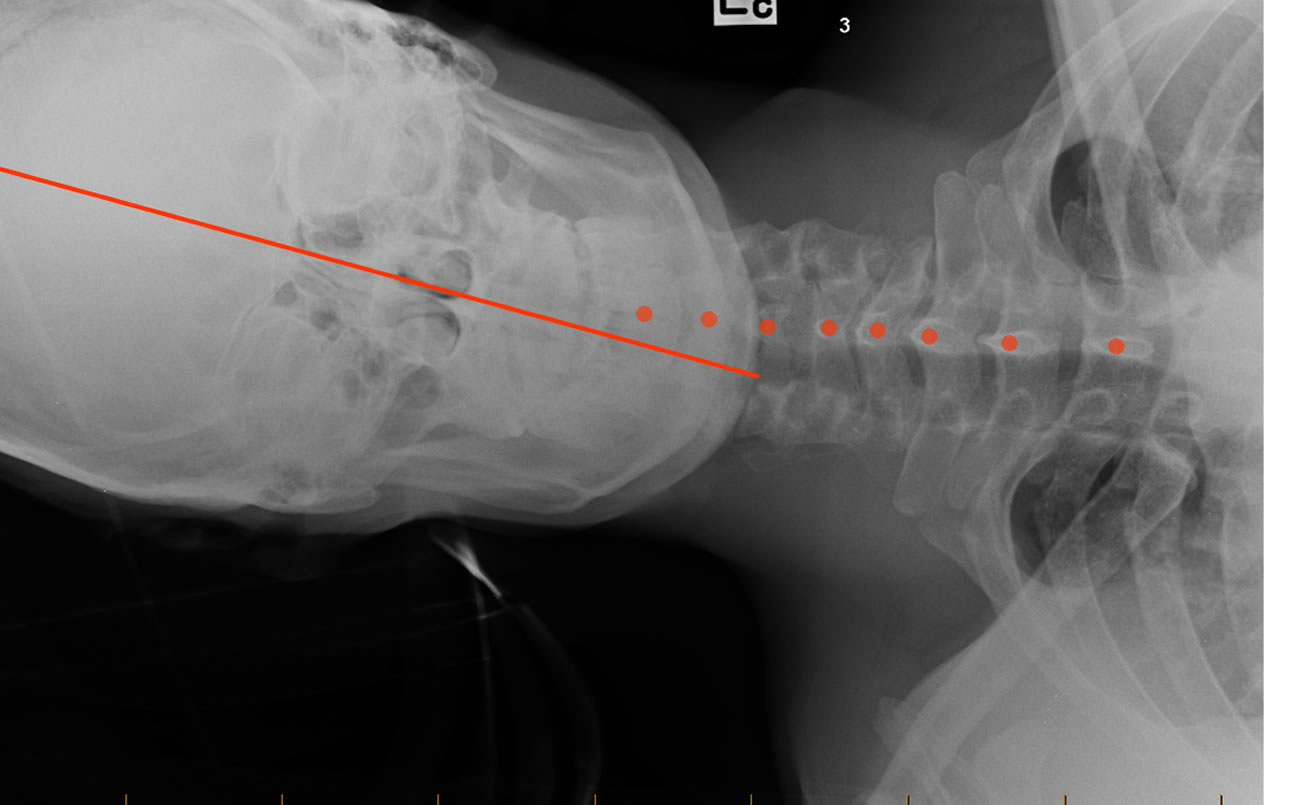
This pillow is too high. The head is tilted and the upper vertebrae will be under load.
Below we have a small, medium and large body shape person on the same 3 pillows. See how different each person's position is and how the one pillow does not suit every body shape.
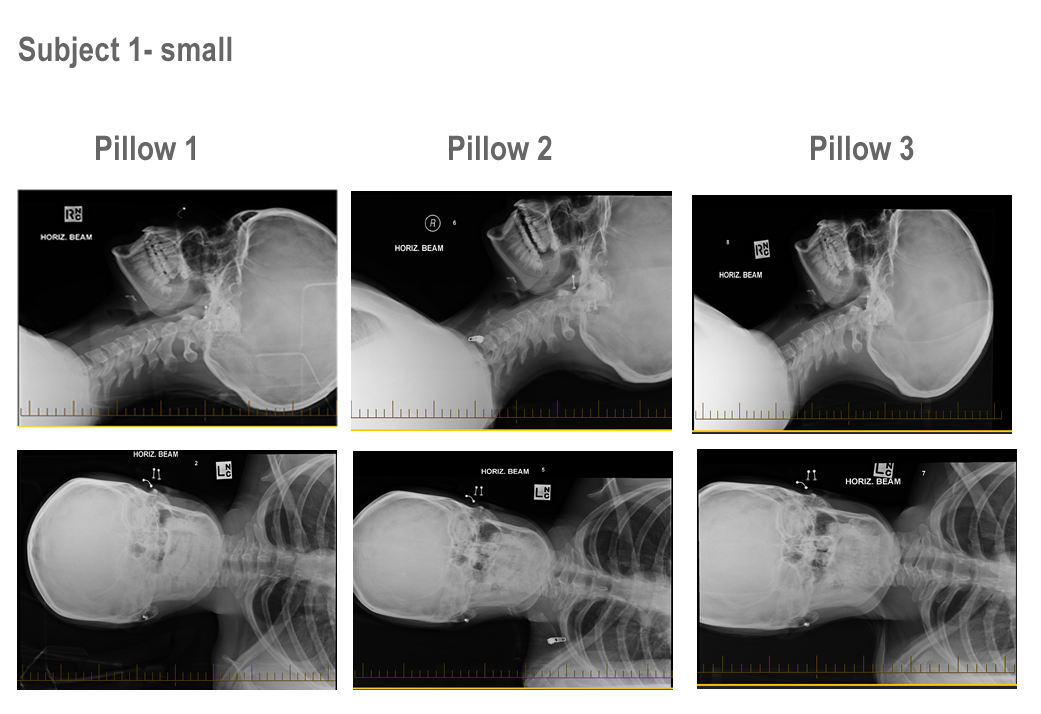
With the small subject Pillow 1 will provide the best support.

With the medium sized subject Pillow 2 will provide the best support in both back and side sleeping.
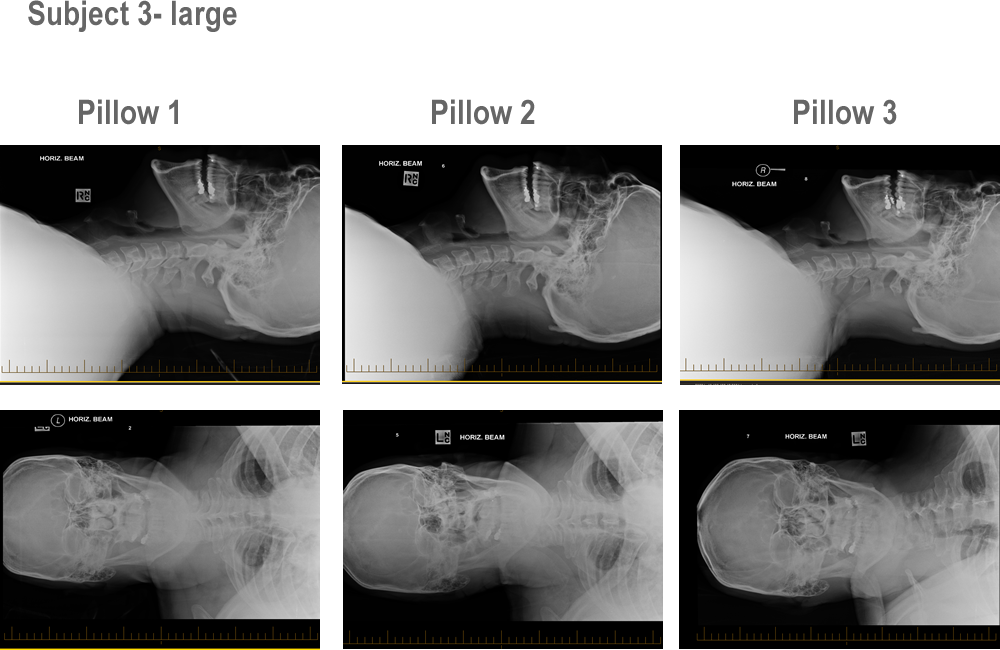
With the large sized subject Pillow 3 will provide the best support in back sleeping but not side sleeping. Pillow 2 is likely to be better for a sidesleeper.
Sleeping Position vs Neck Position and Pillow height
Many pillows you will see advertised as low, medium and high profile pillows. Unfortunately its not that simple.
Our bodies just don't work like this and almost every pillow we fit we will customise or adjust to suit the person's body shape, posture and bed type.
When you are sleeping on your back you typically require a pillow that is half the height than when you sleep on your side.

When you sleep on your stomach you are placing your neck at end range rotation and require very little pillow height.
When you move between two or more positions you will find a single pillow very difficult to be the perfect solution for you. When we fit a pillow we work with you to gauge what percentage of time you spend in these positions then match or customise a pillow height based on the position you spend the majority of your time.
How to assess your pillow height requirements:
Steps to check your current pillow:
- See if a gap exists between your neck and pillow. You should not be able to out easily put your hand between the pillow and your neck in both back (supine) or side-lye positions.
- The angle of your head on the pillow should be horizontal when you are lying on your side - so your nose, chin and midline of your sternum should all be in a horizontal line. If you can't get someone to help take a photo and check and recheck with small adjustments.
-

pillow positions
The angle of your head on the pillow should be in line with the join between your sternum and collar bone with only a small tilt of the forehead above the horizontal at most.
Quick Check
To adjust your pillow try using a towel either to increase your height, one layer at a time. If you have a large gap between your neck and the pillow try using a rolled up towel in the front edge (on the under surface) to fill the void.
This technique works well for side and back sleeping. It will not work for stomach sleeping.
Prone/Stomach Sleeping
- Avoid at all times.
- If you simply cannot avoid sleeping prone. Adjust to semi prone position either with a body pillow or simply put a pillow under the front of one of your shoulders- this will lift you a little out of full range rotation and still feel like you are sleeping prone.
- Often better without a pillow if always prone as this only increases the rotation and also extends the neck back.
- If you cannot avoid prone or stomach sleeping then we suggest a low pillow. Either use a kids pillow or a low buckwheat husk or feather pillow may suit.

When sleeping on your stomach you need to be careful not to have excessive pillow height.
Vary pillow height depending on mattress density
Soft mattresses will see your body drop further into the bed and as a result you will need a slightly lower pillow.
For firm beds you will need additional height due to not sagging into the mattress as much.
So the same pillow will not work on all beds.
Pillow density/pillows materials:
- Memory foam
- Polyester
- Latex
- Feather/Down
- Buckwheat Husk
Each pillow material has its advantages and disadvantages. Overall we prefer memory foam to most of these materials. Polyester tends not to provide enough support under compression. Latex can maintain a lot of heat and does not provide the same memory/rebound as memory foam. It will fatigue with sweat and with time. Feather and down pillows will move a lot and the support you establish at the start of sleeping is rarely maintained during the night. They are excellent for scalp sensitivity. Buckwheat husk pillows are allergy/dust mite free and excellent for allergy sufferers. They are easily moulded and do hold the shape a lot better than feather and down pillows. They can be adjusted but with the quantity of the filling as well as manually adjusting. The husks will hold their position quiet well during the night. The downside is that they are heavy and quite noisy when you move your head on the pillow.
Pillow between knees
The above recommendations will help with pillow height from the shoulders up. It is also important to remember that pillow height can also affect lower back and hip posture. We strongly recommend for people with low back, hip or knee pain to use a pillow between their knees when sleeping on your side and under your knees when sleeping on your back.
Pillows we recommend
In our decades of clinical practice we have recommended several different styles and types of pillows. As the research grows and the material technology changes so have our preferences to different pillows. We stated before that the crucial aspects of a pillow in order are:
- Pillow height
- Pillow support
- Pillow density
When we have someone with a neck issue where their pillow may be a factor firstly we will encourage them to bring it into their physiotherapy session. The reason for this is to not only see whether it is contributing to their symptoms but also often people will have tried to find the best fit and we can then work out their preferred density.
At Physica we currently recommend 4 styles of pillows with three of these being the same pillow in three different materials/densities.
Complete Sleeperrr- while the name may be a little unusual we have found that our outcomes using this pillow have been excellent.
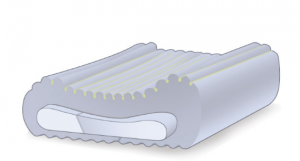
The reason we trust and choose the Complete Sleeperrr is that it allows us to customise the pillow height to your needs. In most cases we can get a close to perfect solution for you.

Complete Sleeperrr- Original (White) memory foam- soft density. This is suitable for people who prefer a softer pillow due to scalp sensitivity or who have previously slept on feather, polyester or down style pillows.
Complete Sleeperrr- Plus (Pink) memory foam - medium density. This pillow is suited for larger body frames and will provide firmer support.
Complete Sleeperrr- Deluxe (Yellow) traditional foam - medium density. This pillow suits people who like a more rigid pillow and do not like the moulding properties of memory foam.
Pros of the Complete Sleeperrr
- Adjustable in height and density
- We stock 3 different densities
- Durable and lasts approximately 2-3 years
Cons of the Complete Sleeperrr
- People with significant allergies can be sensitive to the foam manufacturing process, any foam smell does usually disappear in few days.
The final pillow we often recommend at Physica is a buckwheat husk pillow. These are a traditional Japanese style of pillow and suitable for people who have allergies, as they do not use foam and also do not attract dust mites. Whilst we do not stock these at Physica we do recommend https://pureearthaustralia.com/
Travelling with your pillow
If you find that you are able to attain the ideal alignment with a pillow we suggest you take it everywhere. Memory foam is easily packed into the corner of a suitcase- tip- use a vacuum cleaner in a bag for maximal compression. However they are heavy so watch out for any excess baggage weight.
Similarly buckwheat husk pillows are heavy and not compressible.
If you cannot travel with your pillow many hotels offer a pillow menu- be picky and get the best fit using the technique above to ensure your neck enjoys the holiday as well. If a pillow menu isn't available then use towel to tailor the pillow to your needs. Spend 5 minutes setting your pillow up so that you don’t wake in the middle of the night with pain.
When to buy or replace your pillow
- As a general rule you should look to replace your pillow every two years although this does depend on the pillow material.
- Some pillow manufacturers even provide a tag on the pillow so you can jot down the date you bought it, to see how it’s ageing.
- Replace your pillow if it is damaged, stained, smells, or if you cannot adjust to your correct needs.
- Avoid getting pillows wet- most pillows cannot be washed.
- Care with foam pillows in extreme temperatures.
The pillow test
- For synthetic and feather down pillows you can also try the shoe test to see if your pillow might need replacing:
- Put your pillow on a reasonably flat surface and fold it in half.
- Put a clean sports shoe on top.
- If the shoe flies off as your pillow bounces back into its original shape, your pillow is likely to still be supportive.
- If the shoe stays folded and the pillow doesn’t rebound back into shape, it’s probably time to buy a new one.
- The easy answer is that when you cannot set up your pillow for the correct height as outlined above you will need a new pillow.
How do I buy a new pillow?
Well it's easy for us just to say we can sell you a pillow online- but that's the mistake you've done before. Instead get your pillow assessed. Book a physiotherapy assessment either online or by calling one our clinic. Make sure you bring your current pillow and we will work with you to get a better nights sleep.

